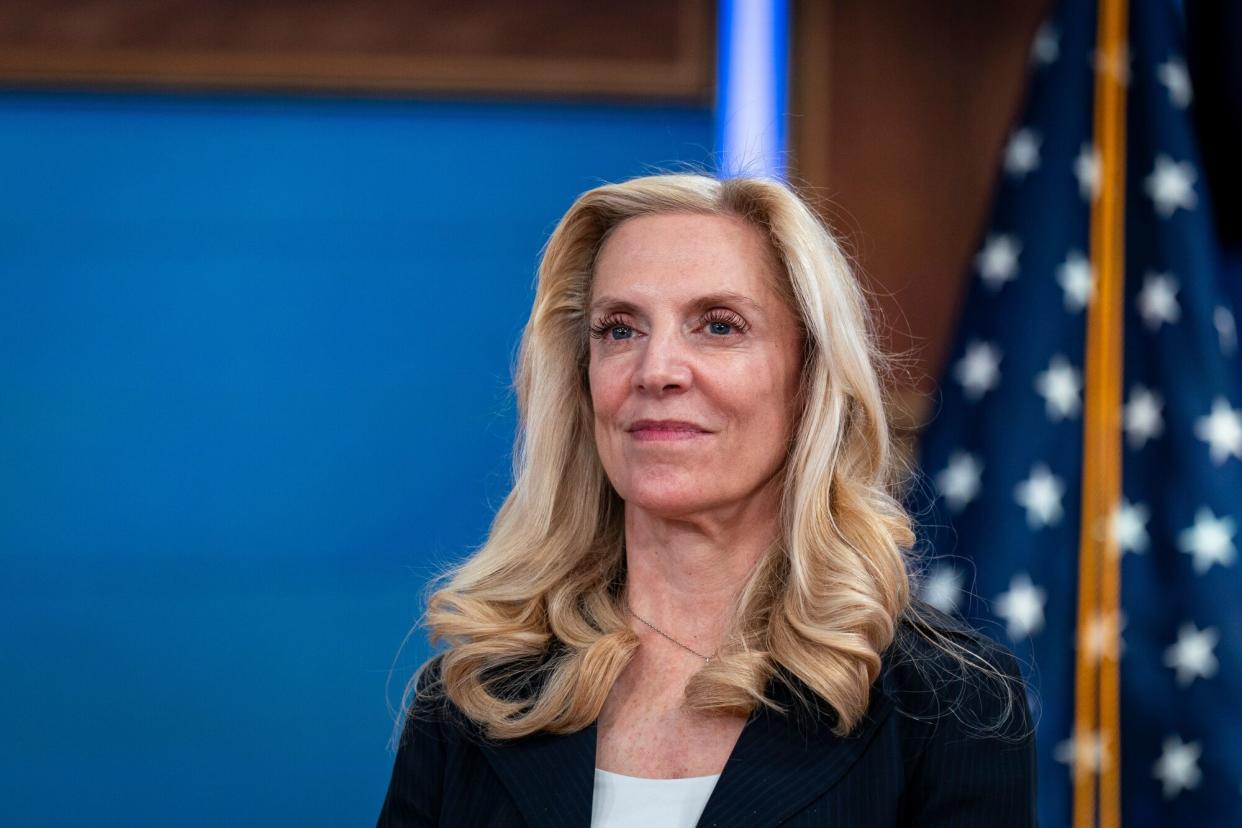Brainard Pushed to Change Biden Rate Forecast to Rosier View

(Bloomberg) -- Joe Biden’s top economic aide, Lael Brainard, successfully pressed to adjust a White House forecast in a way that resulted in a slightly rosier outlook in the president’s forthcoming budget plan, according to people familiar with the matter.
Most Read from Bloomberg
Chemical Linked to Cancer Found in Acne Creams Including Proactiv, Clearasil
Huawei Chip Breakthrough Used Tech From Two US Gear Suppliers
How Trump’s Ex-Treasury Chief Landed 2024's Highest-Profile US Bank Deal
Stocks Climb on Bets Fed, ECB Closer to Rate Cuts: Markets Wrap
Biden Orders Military to Build Port to Ease Gaza’s Hunger Crisis
The disagreement was over forecasts for 10-year Treasury yields in the budget, a linchpin estimate that is intertwined with other measures, like debt service costs.
Forecasts in the president’s budget proposal — scheduled for release Monday — are typically set by Treasury Secretary Janet Yellen, Office of Management and Budget Director Shalanda Young and the chair of the Council of Economic Advisers, Jared Bernstein. The group is known in fiscal circles as the troika.
An October meeting, however, included a fourth invited principal: Brainard, who directs the National Economic Council. Brainard at one point disagreed with Yellen, Young and Bernstein over the 10-year interest rate projections and predicted a slightly lower rate, the people said, speaking on condition of anonymity to detail the discussions.
The difference between the views was modest and both were well within range of private-sector estimates, the people said. The result of Brainard’s push was to lower the projected rate by 10 basis points across three years of the forecast, one of the people said. Brainard declined comment.
Brainard’s forecast painted a modestly better picture for Biden. A lower interest-rate forecast would have the effect of an improved overall outlook by offering more support for growth and suggesting less concern about inflation. It also would lower borrowing cost projections at a time of rising worries about the US deficit and debt.
Two of the people described the discussion as strained, while another downplayed that idea, casting it as a normal discussion among economists. While it’s not uncommon for NEC directors and staff to participate in the budget-making process, they typically are not closely involved in setting the precise forecasts, which are technically set by the troika, the people said.
Last October’s discussion came at a deeply volatile time — yields surged to nearly 5% that month, and have trended downward since, sitting today at roughly 4.1%. Questions about inflation and the Federal Reserve’s path were swirling. That left the group trying to sort out long-range forecasts at a time with little precedent or clarity on where rates would settle.
A reduction of 0.1 percentage points in the forecast rate, if applied across the budget’s entire decade forecast, reduces the cumulative deficit over the same period by about $300 billion, projections from the Congressional Budget Office show. While significant, it’s a drop in the bucket of the overall funding gap, with the CBO projecting the total cumulative deficit over the next decade to be $20 trillion. In a call with reporters Wednesday, a White House official said the president’s budget would reduce the cumulative deficit by $3 trillion over 10 years.
Yellen, Young, Bernstein and the White House also declined to comment.
Growing Role
Brainard, a former Fed vice chair who now serves as Biden’s top economic aide, has taken on a growing public profile since joining the White House about a year ago. She’s widely considered a top candidate to succeed Yellen as Treasury secretary should Biden win a second term.
Yellen, Young and Bernstein are members of the president’s cabinet but the NEC director is not.
Presidential budgets often have a slightly rosier outlook than other forecasts. The Trump administration went even further by publishing forecasts that vastly outpaced even optimistic private-sector forecasts, said Marc Goldwein, senior vice president for the Committee for a Responsible Federal Budget, a think tank that advocates for fiscal responsibility.
Trump’s administration “went into fantasy-land,” Goldwein said. “The Biden administration has come back down to earth, but rosy earth, so I think people do kind of take it with a grain of salt.”
Forecasts often don’t pan out. The 10-year Treasury forecasts, for instance, in Biden’s first budget now look substantially out of whack — predicting a rate of 2.1% in 2024, just over half what the actual rate is currently. Last year’s budget has also so far underestimated the cost of borrowing, whereas rates so far this year are well below where they were during the October meeting.
“I think it’s a coin flip whether the 10-year is higher or lower in 10 years than it is today. I think there are pressures both ways,” Goldwein said.
(Updates with specifics of interest rate forecast debate. An earlier version corrected the atribution of the budget’s overall deficit reduction.)
Most Read from Bloomberg Businessweek
How Apple Sank About $1 Billion a Year Into a Car It Never Built
The Battle to Unseat the Aeron, the World’s Most Coveted Office Chair
How Microsoft’s Bing Helps Maintain Beijing’s Great Firewall
Humanoid Robots at Amazon Provide Glimpse of an Automated Workplace
©2024 Bloomberg L.P.



